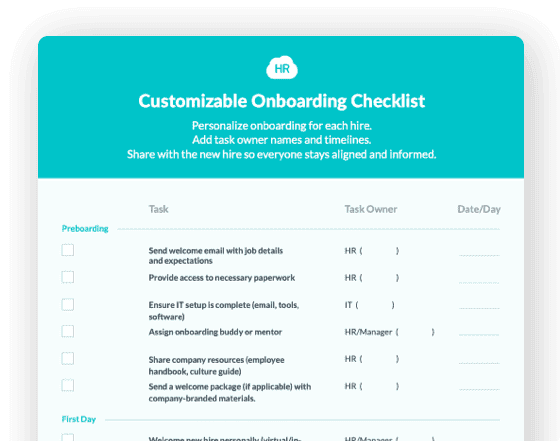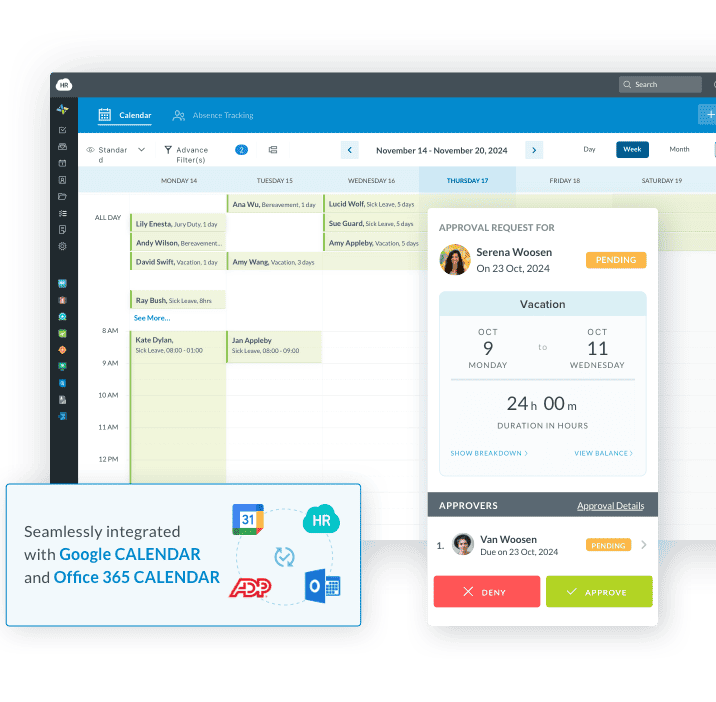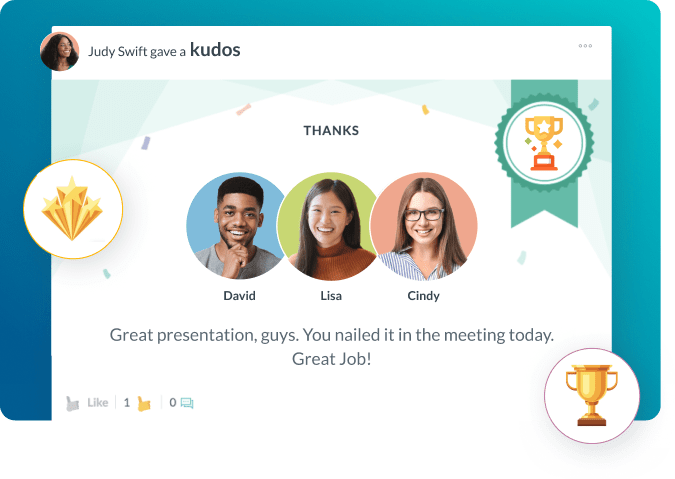Contingency Job Meaning
- What Makes Contingency Jobs Different from Traditional Employment
- Key Points: Why Contingency Jobs Matter for Your Business
- Contingency Jobs vs. Traditional Employment: Key Differences
- Best Practices: Managing Contingency Jobs Effectively
- Pitfalls to Avoid When Using Contingency Jobs
- Industry Applications: How Different Sectors Use Contingency Jobs
- Implementation Plan: Building Your Contingency Job Strategy
- Future Outlook and Trends: The Evolution of Contingency Jobs

 Cut onboarding time
by 60%—here's the
Ultimate Checklist
that helped do it.
Cut onboarding time
by 60%—here's the
Ultimate Checklist
that helped do it.

A contingency job refers to temporary or project based work where employment does not include an implicit or explicit contract for long term engagement. These positions include freelancers, independent contractors, consultants, temporary staff, gig workers, and seasonal employees who provide specialized skills on demand. Organizations use contingency jobs to fill immediate staffing needs, access niche expertise, manage fluctuating workloads, and maintain workforce flexibility without the commitment of permanent employment.
The rise of contingency jobs has transformed modern workforce strategy. Over 72 million Americans participate in the gig economy, representing roughly 45% of the entire US workforce. This shift reflects fundamental changes in how businesses operate and how professionals approach their careers. Understanding what contingency jobs mean and how to leverage them effectively has become essential for business decision makers who need to build agile teams that can respond quickly to market demands.
What Makes Contingency Jobs Different from Traditional Employment
Contingency jobs differ from traditional full time positions in several critical ways. These workers typically lack long term employment contracts and receive payment on a project or hourly basis rather than through regular salary arrangements. Companies do not provide health insurance, retirement benefits, paid time off, or other perks that regular employees receive. The engagement ends when the project completes or the specific need expires, creating clear boundaries around the work relationship.
The legal classification matters significantly. Independent contractors and freelancers maintain responsibility for their own taxes, unlike employees whose employers handle tax withholding. This distinction carries major implications for both parties. Misclassifying workers can result in severe penalties, back taxes, and legal complications. The Bureau of Labor Statistics reported that 4.3% of employed individuals hold contingent jobs as their primary occupation, with workers aged 16 to 24 being four times more likely to work in contingent positions compared to those aged 25 and older.
Contingency jobs also provide workers with autonomy that traditional positions rarely offer. These professionals often work for multiple clients simultaneously, set their own schedules, and choose which projects align with their skills and interests. This flexibility appeals particularly to younger generations who prioritize work life balance and diverse experiences over job security. Your recruitment strategy needs to account for these evolving worker preferences when competing for top talent.
Key Points: Why Contingency Jobs Matter for Your Business
Understanding how contingency jobs function within your broader talent strategy helps you make smarter staffing decisions. Here are the essential points every business leader should know:
-
Contingency jobs provide immediate access to specialized skills without long term financial commitments. You can bring in expert talent for specific projects, then scale back when demand decreases. This model works particularly well for seasonal businesses, project based work, and companies experiencing rapid growth or uncertainty.
-
Cost efficiency remains one of the strongest advantages. Organizations save substantially on benefits, office space, equipment, and training costs. Research shows that contingent workers can reduce overall labor expenses by 20 to 30% compared to permanent employees when factoring in total compensation and overhead.
-
The talent pool for contingency jobs spans the globe. Modern HR tech platforms enable you to source skilled professionals from anywhere, breaking down geographic barriers and expanding your access to niche expertise that might not exist in your local market.
-
Workforce agility increases dramatically when you incorporate contingent workers into your staffing model. You can respond faster to market changes, launch new initiatives without lengthy hiring processes, and test new business models with minimal risk.
-
Quality control and integration present ongoing challenges. Contingent workers may lack deep knowledge of your company culture, systems, and long term goals. Effective onboarding and clear communication become critical to ensure these temporary team members deliver results that align with your standards.
-
Legal compliance requires constant attention. Labor laws vary by jurisdiction, and regulations governing contingent workers continue evolving. Staying current with classification requirements, tax obligations, and worker protections protects your business from costly legal issues.
Contingency Jobs vs. Traditional Employment: Key Differences
|
Factor |
Contingency Jobs |
Traditional Employment |
|
Contract Duration |
Project based or temporary with defined end dates |
Ongoing employment with no predetermined end date |
|
Benefits Package |
No health insurance, retirement plans, or paid leave |
Full benefits including insurance, PTO, and retirement |
|
Tax Responsibility |
Worker handles all tax filing and payments |
Employer withholds and manages payroll taxes |
|
Work Flexibility |
Can work for multiple clients, set own hours |
Typically exclusive to one employer with set schedule |
|
Job Security |
Limited, ends when project completes |
Greater stability with termination protections |
|
Average Cost to Company |
20 to 30% lower total compensation |
Higher due to benefits and overhead expenses |
Best Practices: Managing Contingency Jobs Effectively
Successfully integrating contingent workers into your operations requires thoughtful planning and execution. Many companies stumble by treating these professionals as second class team members or failing to establish clear expectations. Following proven best practices ensures you maximize value while maintaining positive relationships.
Start by defining clear scope and deliverables before engagement begins. Document exactly what you expect the contingent worker to accomplish, the timeline for completion, and how you will measure success. Vague expectations lead to misaligned results and frustration on both sides. Create detailed project briefs that outline goals, milestones, reporting requirements, and quality standards.
Invest in proper onboarding even for short term workers. Provide access to necessary tools, systems, and information from day one. Share relevant background about your company culture, communication preferences, and key stakeholders. This upfront investment pays dividends through faster productivity and better integration with your permanent team. Your onboarding workflows should include contingent worker tracks that streamline this process.
Maintain consistent communication throughout the engagement. Schedule regular check ins to review progress, address questions, and provide feedback. Do not wait until problems arise to engage. Proactive communication prevents small issues from becoming major obstacles and helps contingent workers feel connected to your organization even during brief engagements.
Treat contingent workers with the same respect and inclusion you extend to permanent employees. Invite them to relevant meetings, share important updates, and acknowledge their contributions publicly. Creating a welcoming environment improves performance and increases the likelihood that top talent will return for future projects.
Monitor compliance rigorously. Work with legal and HR experts to ensure proper worker classification. Review contracts carefully and document the nature of each relationship. Track hours worked, maintain clear payment terms, and stay current with changing regulations in your jurisdiction.
Use technology to manage contingent workforce operations efficiently. Time tracking software and shift planning tools help you monitor productivity, ensure accurate payment, and maintain visibility across your entire workforce. Automated systems reduce administrative burden and minimize errors that can damage relationships or create compliance issues.


Pitfalls to Avoid When Using Contingency Jobs
Even experienced companies make mistakes when managing contingent workers. Understanding common pitfalls helps you avoid expensive errors that can damage your reputation, create legal exposure, or undermine team performance.
Worker misclassification stands as the most dangerous pitfall. Treating an employee as an independent contractor to avoid payroll taxes and benefits creates severe legal risk. The IRS and state labor departments actively pursue misclassification cases. Penalties can include back taxes, fines, interest charges, and even criminal liability in extreme situations. Apply consistent criteria when determining worker status and document your reasoning thoroughly.
Poor integration with permanent staff creates tension and reduces effectiveness. When contingent workers feel excluded or treated as outsiders, collaboration suffers and knowledge transfer breaks down. This leads to duplicated efforts, missed opportunities, and lower quality outcomes. Foster an inclusive culture that values all contributors regardless of employment status.
Inadequate oversight results in subpar deliverables and wasted resources. Some managers adopt a hands off approach with contingent workers, assuming these professionals need minimal guidance. While experienced contractors bring expertise, they still require direction specific to your business context. Neglecting to provide clear expectations and regular feedback produces disappointing results.
Overreliance on contingent workers can hollow out your organization. When too much institutional knowledge and critical capability resides with temporary staff, you create dangerous vulnerabilities. Key processes become dependent on people who may leave suddenly, and your permanent team loses opportunities to develop essential skills. Maintain balance by keeping mission critical functions and strategic expertise in house.
Ignoring the total cost of contingent labor leads to budget surprises. While hourly rates for contractors often exceed permanent employee salaries, many managers focus only on this direct cost comparison. Factor in all expenses including recruitment time, project management overhead, potential quality issues, and knowledge transfer needs. Sometimes what appears cheaper initially costs more when you account for these hidden factors.
Industry Applications: How Different Sectors Use Contingency Jobs
Contingency jobs serve unique purposes across various industries. Understanding how other sectors leverage temporary talent provides insights you can apply to your own operations.
Healthcare organizations rely heavily on contingent workers to manage staffing fluctuations. Hospitals bring in travel nurses, locum tenens physicians, and temporary allied health professionals during peak demand periods, staff shortages, or specialty coverage gaps. The complexity of healthcare workforce management requires balancing 24/7 scheduling demands with strict compliance requirements. Healthcare contingent workers often command premium rates due to licensing requirements and specialized skills, but they provide essential flexibility that permanent staffing cannot match.
Technology companies use contingent workers extensively for project based development work. When launching new products or scaling infrastructure, tech firms hire contract developers, designers, and engineers who possess specific technical skills needed for limited timeframes. This approach allows companies to access cutting edge expertise without maintaining large permanent teams that might become underutilized. The rapid pace of technological change makes contingency jobs particularly valuable in this sector.
Manufacturing and logistics operations employ seasonal contingent workers to handle predictable demand spikes. Retailers add temporary staff during holiday seasons, while agricultural operations bring in harvest workers at peak times. Distribution centers scale warehouse teams up and down based on order volume. Modern flexible work arrangements combined with smart workforce planning enable these companies to maintain service levels without carrying excessive fixed labor costs during slow periods.
Implementation Plan: Building Your Contingency Job Strategy
Creating an effective approach to contingency jobs requires systematic planning and execution. Follow these steps to build a program that delivers results while managing risk.
Step One: Assess Your Workforce Needs
Begin by analyzing which roles and functions could benefit from contingent workers. Identify positions with predictable busy periods, projects requiring specialized expertise, and areas where demand fluctuates significantly. Distinguish between core competencies that should remain in house and supplemental capabilities you can source externally.
Step Two: Develop Clear Policies
Create comprehensive guidelines covering worker classification, approval processes, budget limits, and compliance requirements. Define who has authority to engage contingent workers, what documentation is required, and how you will track these relationships. Establish consistent criteria for determining whether a role should be filled with contingent or permanent staff.
Step Three: Build Your Talent Pipeline
Identify reliable sources for contingent workers in your key skill areas. This might include staffing agencies, freelance platforms, professional networks, or direct relationships with experienced contractors. Maintain a database of high performing contingent workers who delivered excellent results. Building these relationships in advance enables faster hiring when urgent needs arise.
Step Four: Implement Supporting Technology
Deploy systems that streamline contingent workforce management. Use advanced recruitment tools to source and evaluate candidates efficiently. Implement time tracking, project management, and payment systems designed for contingent workers. Integrate these tools with your core HR platform to maintain visibility across your entire workforce.
Step Five: Train Your Managers
Ensure leaders understand how to work effectively with contingent workers. Provide guidance on setting clear expectations, managing remote team members, and maintaining appropriate boundaries. Teach managers to recognize warning signs of misclassification and when to escalate concerns.
Step Six: Monitor and Optimize
Track key metrics including time to hire, cost per project, quality of deliverables, and contingent worker satisfaction. Analyze this data to identify improvement opportunities. Gather feedback from both permanent employees and contingent workers about what works well and what creates friction. Continuously refine your approach based on these insights.
Step Seven: Plan for Knowledge Transfer
Create systems that capture important information before contingent workers complete their engagements. Document processes, maintain code repositories, record decisions, and conduct thorough handoffs. This protects institutional knowledge and ensures continuity when temporary staff depart.
Future Outlook and Trends: The Evolution of Contingency Jobs
The contingency job market continues expanding at remarkable speed. Projections indicate that contingent workers will represent 40% of the global workforce by 2028, with the gig economy valued at over $2.1 trillion by 2033. Understanding emerging trends helps you prepare for this shifting landscape.
Artificial intelligence is transforming how companies find and manage contingent workers. AI powered platforms now match talent to projects more efficiently, automate contract management, and provide predictive analytics about workforce needs. These tools reduce hiring time while improving quality of matches. Expect AI to play an increasingly central role in contingent workforce operations.
Skills based hiring is replacing traditional credential requirements. Companies now prioritize demonstrated competencies over formal education when evaluating contingent workers. This shift expands talent pools while improving job performance outcomes. Organizations that embrace skills based approaches gain competitive advantages in accessing diverse talent.
Legal and regulatory frameworks continue evolving to address contingent worker protections. Governments worldwide are implementing stricter rules around worker classification, benefits, and labor rights. California's AB5 law exemplifies this trend. Businesses must stay vigilant about compliance changes and adapt policies accordingly. Expect increased scrutiny and enforcement activity.
Remote work capabilities have eliminated geographic constraints for contingent jobs. Companies now source talent globally, accessing specialized expertise regardless of location. This trend accelerates as collaboration technology improves and cultural barriers diminish. Forward thinking organizations build globally distributed teams that blend permanent and contingent workers seamlessly.
Total talent management approaches are gaining traction. Rather than treating contingent workers as separate from permanent staff, leading companies integrate both groups into unified workforce strategies. This holistic view enables better resource allocation, improved succession planning, and more effective talent development across the entire organization.
The distinction between contingent and permanent work may blur further. Hybrid arrangements combining elements of both models could emerge as workers and employers seek middle ground. Expect experimentation with new contract structures that provide more security for workers while maintaining flexibility for employers.
Preparing for these trends requires proactive investment in technology, skills development, and policy refinement. Organizations that view contingency jobs as strategic assets rather than tactical stopgaps will thrive in the evolving world of work. Build the capabilities now that will enable you to compete effectively for top talent in this dynamic market.
 Discover how our HR solutions streamline onboarding, boost employee engagement, and simplify HR management
Discover how our HR solutions streamline onboarding, boost employee engagement, and simplify HR management
Keep Reading
Specialized Onboarding Software for Healthcare to Reduce Admin Work and Scale Hiring Fast
Imagine this: a women’s health clinic hires two new nurses, only to lose both within
A Closer Look at HR Cloud-ADP Integrations
ADP is the gold standard for payroll and core HR management. But if you’ve ever tried to
Retention Reset: How to Keep Your Best Talent in 2025
More employees are walking away from their jobs in 2025 not just for better pay, but for
Ready to streamline your onboarding process?
Book a demo today and see how HR Cloud can help you create an exceptional experience for your new employees.







